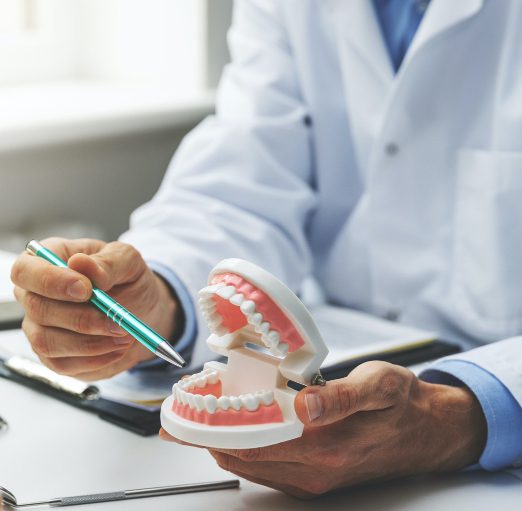Restorative dentistry is a specialized field of dental healthcare that focuses on rectifying issues affecting the structure and function of teeth and gums. One common restorative treatment is the application of dental crowns, which are custom-made caps used to encase a tooth that has been decayed, damaged, or weakened.

The Role of Dental Crowns
Dental crowns play an important role in restoring a tooth back to its original strength, shape, size, and appearance. They not only could bolster the integrity of the affected tooth but also shield it from further harm. This protective feature makes them particularly useful following root canal procedures, where they help safeguard weak teeth against future damage. Additionally, dental crowns serve as supportive structures for other restorative treatments, such as bridges. They can also be employed to fortify teeth with severe decay. The result is often a restoration that closely resembles natural teeth while enhancing long-term durability and functionality.
Dental Crowns: A Solution for Damaged Teeth
In cases where there’s significant damage or disease compromising your oral health or smile aesthetics, Dr. Georgia Haddad at Beach Cities Dental Group might recommend using dental crowns as part of your tailored treatment plan. With over 15 years of experience handling complex restorative cases using advanced modern technology, Dr. Haddad aims to provide solutions designed to improve a patient’s quality of life by restoring their oral health. The process involves creating customized caps that completely cover the compromised tooth, thereby improving its structural integrity while preserving its aesthetic appeal.
When Do You Need A Crown?
Dentists typically recommend dental crown placement when you have large fillings without enough remaining healthy tooth material capable holding these fillings securely in place; when attaching bridges; protecting weak teeth from breaking; restoring already broken teeth; covering discolored or badly shaped teeth; and even when covering a dental implant.
Conclusion
In conclusion, the use of dental crowns is an integral part of restorative dentistry. They are vital in enhancing the strength and appearance of damaged or decayed teeth while protecting them from further deterioration. Therefore, if you have any concerns about your oral health that might require restorative procedures such as dental crown placement, it’s advisable to seek treatment without delay to prevent further damage.
